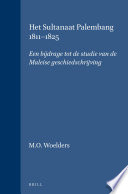Author
Thomson; James A. ; Sussell; Jesse
Year
2015
Publisher
RAND Corporation
Language
English
Pages
3
Last Update
04-Sep-2024
Keywords
Population Studies ; Statistics ; Political Science
Virtually all observers of American politics agree that there is a high degree of polarization between the Democratic and Republican parties in Congress. There is also a general consensus that this interparty polarization has been increasing over time: The ideological gap separating the parties of Tip O’Neill and Gerald Ford in the 1970s may have been large, but it was smaller than the distance between the Clinton Democrats and the Gingrich Republicans in the 1990s, and smaller still than the gulf between the parties of Obama and Boehner today. There is much less consensus, however, as to the causes of...
Related
See More
320 Rue St Jacques, The Diary of Madeleine Blaess, The Diary of Madeleine Blaess

The Economic Burden of Providing Health Insurance

History Of Utah's American Indians

Het Sultanaat Palembang 1811-1825

Collaborative Governance

Al-Shura: The Qur’anic Principle of Consultation